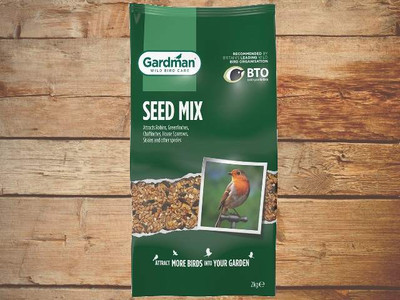A Guide to Bird Nesting Boxes
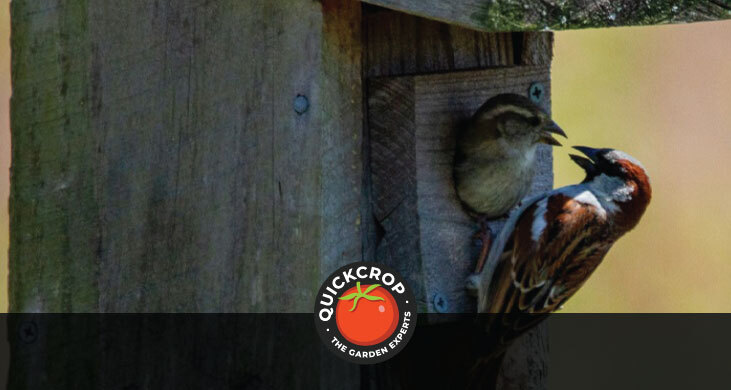
A Guide to Bird Nesting Boxes
A bird-friendly garden is a garden that feels more alive. The ambience of birdsong and the flutter of wings lend a serene air to our surroundings, as well as adding colour and interest for children. A healthy bird population can also have some great knock-on benefits for the vegetable garden, whether in terms of natural pest control or a healthier garden ecosystem. Birds will happily feed on aphids, slugs, flea beetles or cabbage caterpillars, keeping populations in check.
However, we can’t take birds for granted. The house sparrow, for example, has seen its numbers fall drastically in the UK: between 1971 and 2008 this was estimated as a 71% drop, and house sparrows are currently on the red list of conservation concern. In general the reasons for bird decline are numerous, but include the felling of old trees, stripping away of natural habitat (such as native hedgerow), modern building methods or the renovation/knocking down of old buildings.
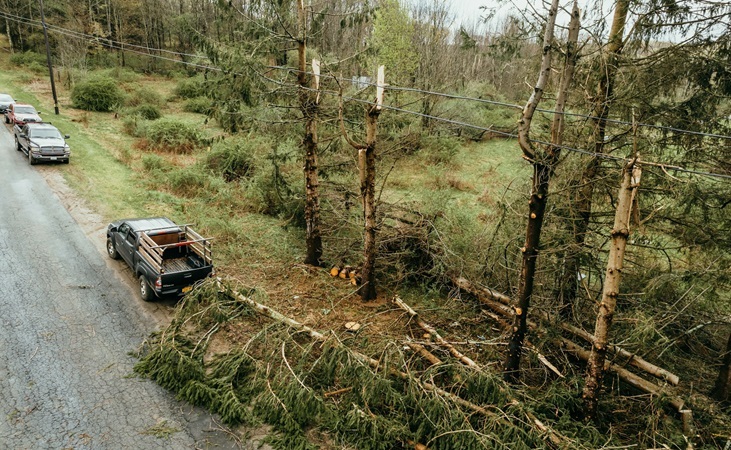
Man-made nest boxes make for a vital alternative for bird species as traditional nesting habitats are lost. If they have been suitably designed, then various bird species will readily use them. These habitats include natural hedgerows, old trees that are felled, or old buildings that are renovated or knocked down.
There are a wide range of nest box designs and materials, and one individual type of box can often be used by various bird species. It’s also very possible to build your own nest box, and you can find detailed guides on the British Trust for Ornithology (BTO) website. There are some key principles to abide by when it comes to material and design.

Workman 16oz Claw Hammer
View ProductHow To Construct a DIY Nest Box
Handy tools to have to hand: saw, drill, screwdriver, hammer, galvanised nails and measuring tape.
The material that the nest box is made from should be well insulating. Materials like plastic, metal or thinner timber can easily overheat. The outer wooden boards should be 25mm thick: this ensures good insulation for freshly hatched offspring, and helps to stabilise the inner climate when outdoor temperatures are very hot or very cold.
If making your own nest box, a soft wood material like pine is suitable and will be easier to cut to size. Wood should be unplaned and untreated to avoid exposing the young birds to chemicals. The exterior of the nest box can however be treated with a water-based preservative.
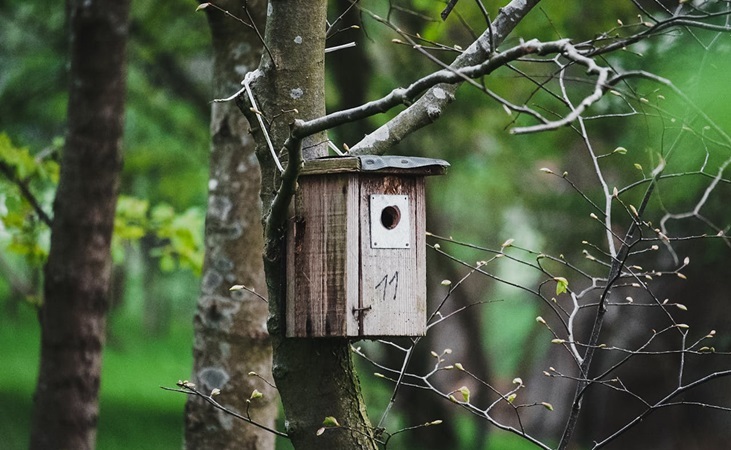
The exact dimensions of the box, including the size of the entrance hole, will differ according to what species you are hoping to attract. Further info on this below.
Drill some drainage holes at the base of the nest box, plus some very small holes near the roof to encourage air circulation. An overhanging roof can also encourage rain to runoff, as well as discourage predators. Angling the nest box slightly downwards is another method for keeping the interior dry and sheltered.
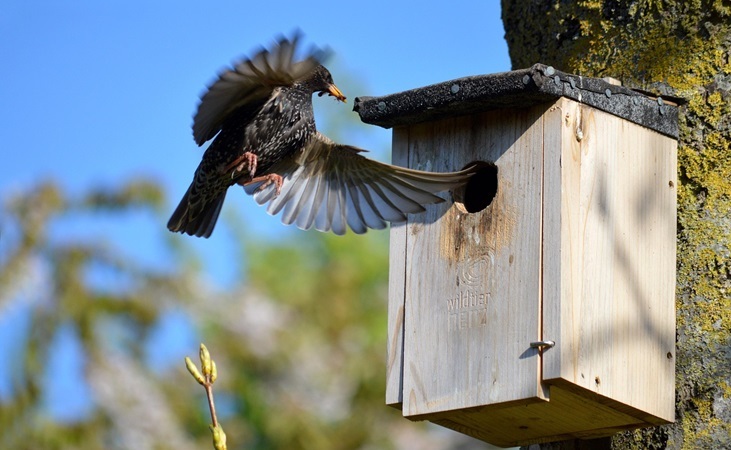
Ideally a nest box should be somewhat inconspicuous or natural-looking. Bright colours can attract predators. Similarly, a perch may seem like a bird-friendly addition but it can also give potential predators a foothold.
A removable or hinged lid is a feature of many nest boxes. This allows for easy access when cleaning.
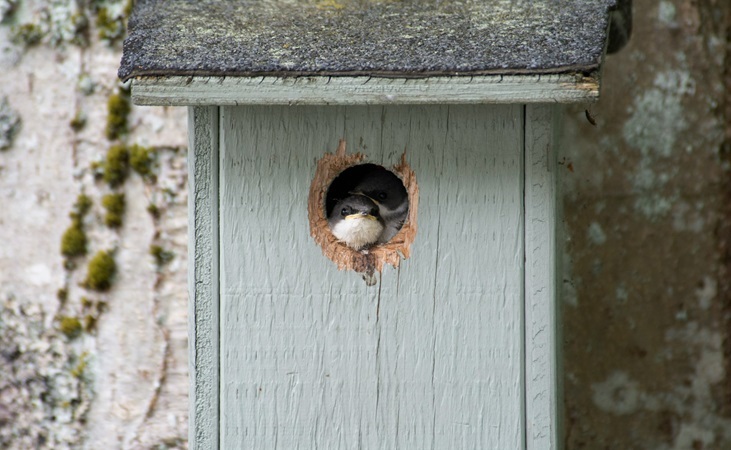
Entrance Holes
The diameter of the entrance hole of each box will influence who is likely to use it. Drill bits can be used to create a clean hole. A guide to common entrance sizes and the species that they suit follows: This is by no means comprehensive, and nest boxes can come in a wide range of styles or sizes.
25-27mm: These smaller sized entrance holes are ideal for blue tits, coal tits or marsh tits. These birds can use boxes with larger entrances, but 25-27mm entrances will prevent access to bigger birds who may oust them from their nest.
28mm: This entrance size will suit Great Tits as well as nuthatches and pied flycatchers; the same birds mentioned above can also avail of these nest boxes.
32mm holes will allow access for the widest range of nest box inhabitants, including House Sparrows, Great, Blue, Marsh, Coal and Crested Tits, Nuthatches, Collared and Pied Flycatchers and Redstarts.
45mm: Starlings require this larger entrance hole size, as well as a more spacious nesting chamber. This size of nestbox can also provide shelter for the Great Spotted Woodpecker.
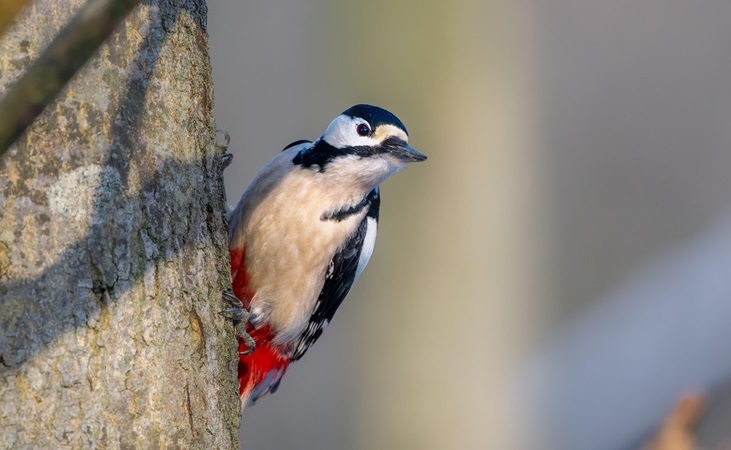
When is the Best Time to Put Up a Nest Box?
The earlier in advance of spring you can get a nesting box up, the more likely it is to be used. The best time is probably in autumn or winter, as it gives birds plenty of time to discover the nesting space ahead of the breeding season (it can also be used for shelter over the winter).
There’s still time to get your nest box up in March, but after that it’s best to wait until the nesting or breeding season is over (it’s best to wait until roughly the end of August, but some birds can nest longer into the year).
While you can sometimes have immediate results, birds often need time to discover these spaces and feel comfortable enough to start using them. Once they do though, they are likely to be loyal and see it as a space that they can return to again in the following years.

Wild Bird Suet Balls - Pack of 12
View ProductLocation & Placement
Ideally the Nest box should be in a position that is somewhat sheltered from strong winds or sunlight. Having the nest box facing between the north and south east should help avoid the worst of inclement weather in the UK. Attach the nest box to a sturdy tree trunk, pole, fence or wall.
When it comes to height, the best placement can vary depending on the size of the entrance hole or the type of bird it’s been designed for. A height of 3-5 meters is often ideal to protect against predators such as cats, but it should be at least 2m (this can also prevent interference from curious passers by!).
Open fronted nest boxes are usually placed lower, but careful placement is key and they should be surrounded by dense vegetation to safeguard against predators. Swifts on the other hand will benefit from boxes or nesting spaces that are placed at least 5 metres high.

Brushed copper Mini Nyjer Feeder
View ProductBird nesting areas should be placed or kept at a distance from a bird feeding area; if not this can cause territorial issues and disturbance between birds.
Nearby foraging sources can really help birds to take care of their young without leaving the nest for long periods. Edible or wildlife-friendly hedging can provide berries or seeds, while a patch of overgrown vegetation can attract earthworms or insects.
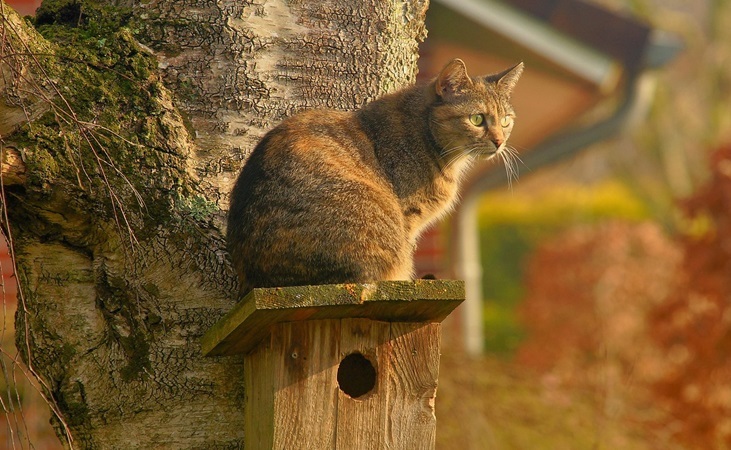
Predators
Birds can, unfortunately, face a number of threats. If you have a neighbouring cat you will be all-too-familiar with how they can hang out near a feeder and torment birds to get their kicks (tying small bells to the cat’s collar can help announce their presence). There are also squirrels, stoats, pine martens or crows to contend with.
Nearby/overhanging branches or shrubbery are something to be aware of, as predators can use these to try and gain access.
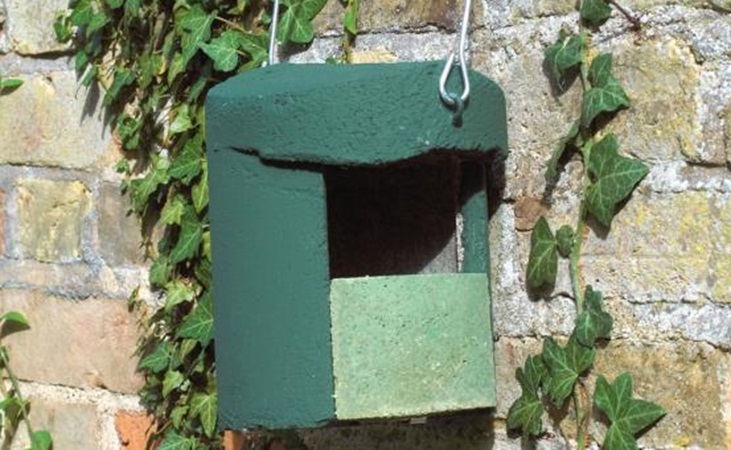
Open Fronted Nest Boxes
This is a more open entrance design that mimics natural nesting sites found in hedgerows or low vegetation. Examples of birds that are likely to avail of these boxes include robins, wrens, spotted flycatchers or blackbirds.
These nesting boxes are placed much lower and close to the ground (1-2m). It's often recommended to conceal them with dense or thorny vegetation (such as bramble), to the point that they are somewhat camouflaged. The birds will still find them.
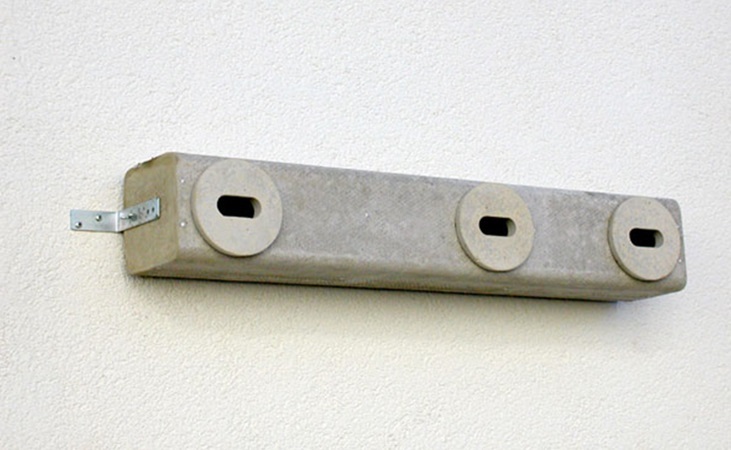
Wall Integrated Nest Boxes
Modern construction methods have led to the loss of cavities and spaces in buildings that would traditionally have been used by birds. Built-in nest boxes or blocks - made from concrete or composite material - are a proven, effective solution. They are designed to be built into walls or installed on external building facades. This can be done when renovating existing buildings, or they can be integrated into new builds.
This type of nesting is most commonly associated with the swift, but house sparrows and starlings are also known to avail of these spaces. Built-in nest boxes are very durable and will last decades, providing a permanent nest site that swifts can return to.
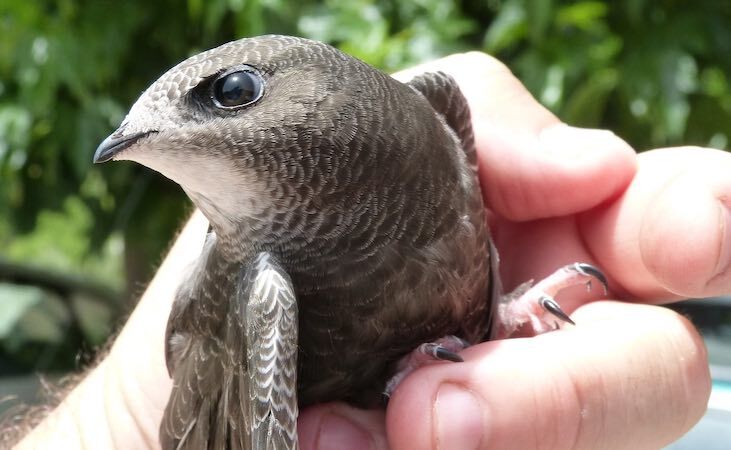
You can have a go at making your own swift nest box if you have a suitable location for it (e.g. a building with wide overhanging eaves). Cut plywood to size; the size of the entrance hole will depend on the thickness of the wood you are using.
At a minimum the box should measure 32cm x 15.5cm x 15.5cm. An entrance hole of 29mm x 65mm is recommended, but this can differ according to the thickness of the timber you are using.
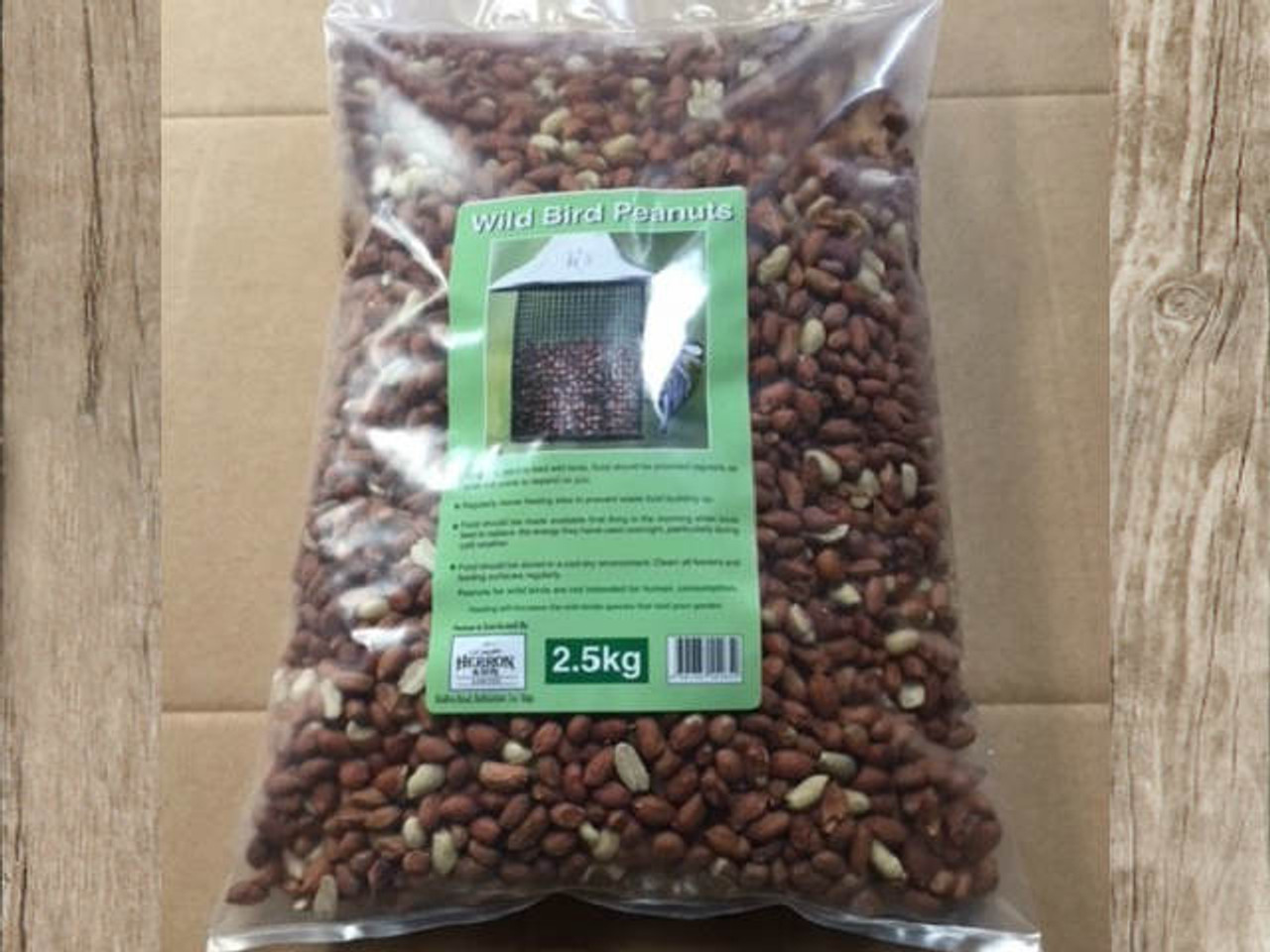
Wild Bird Peanuts - 2.5Kg Bag
View ProductA full cutting guide is available to download from the RSPB website. ‘Pilot holes’ can reduce the risk of wood splitting as you assemble the box. A small, sloped wedge of wood attached just above the entrance can shelter the box from heavy rain etc.
For swift nesting blocks it’s important to keep the area around the entrance free of obstructions or protrusions: swifts are known to approach in a ‘swooping’ pattern that helps them to slow down as they near the entrance.
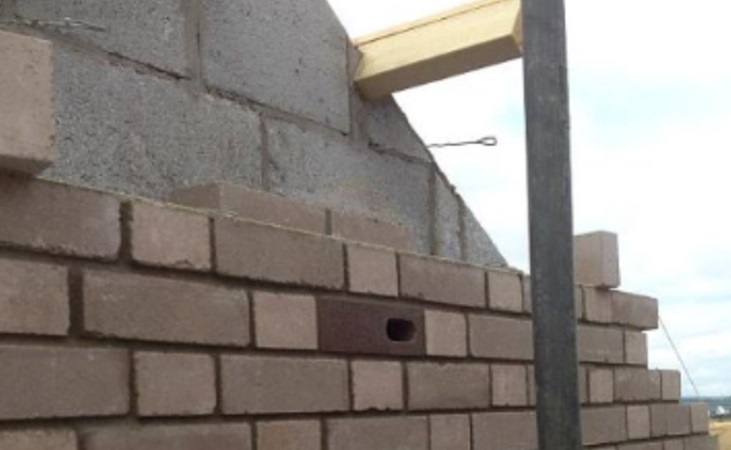
Swift Bricks
A swift brick is as close as you can get to a natural nesting site for swifts. This is a special brick with a hollow interior that can be inserted during construction or an extensive renovation. These bricks are often almost invisible, aside from the entrance hole.
Blue Tits
When it comes to attracting birds or wildlife in general to your garden, blue tits are an excellent place to start. You will recognise them by their colourful blue-green and yellow plumage, and their high-pitched birdsong can be heard in late winter and spring.
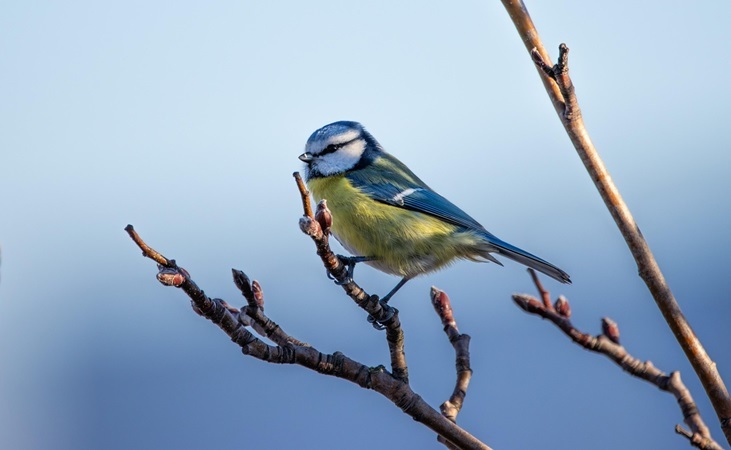
Blue tits can be territorial, so if you have more than one nest box keep them at least 3-5 meters apart. Nest boxes with an entrance hole diameter of 25-27mm will suit this pint-sized bird best, as they will deny access to larger competing birds.
Blue tits like to feed on caterpillars, so a patch of nettles on the edge of your garden can provide them with sustenance. They tend to lay a large number of eggs: not all of the hatched chicks will survive so it’s something of a numbers game. These small birds also like to scan the immediate area for threats before they leave their nesting space, so avoid placing the nest box where it may be surrounded by vegetation or other obstructions.
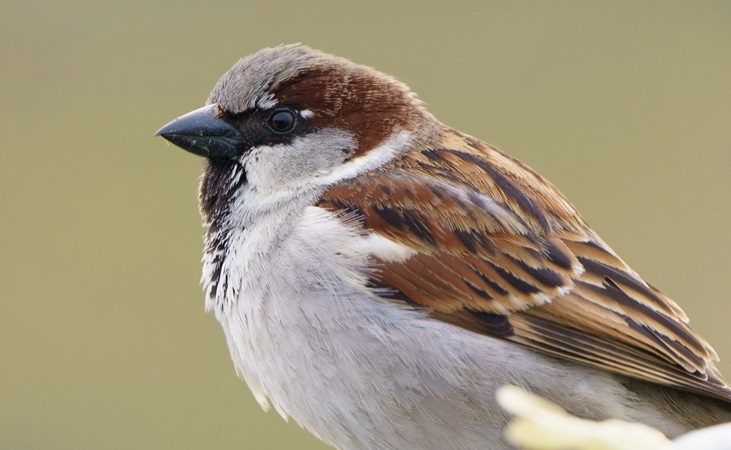
House Sparrow
As mentioned in the beginning of the article, the House Sparrow has had an alarming decline across the UK, as well as elsewhere in Europe. One surreal incident that drew attention to their plight happened in The Netherlands, where the ‘domino sparrow’ managed to cause 23,000 dominos - arranged in an attempt to set a world record - to fall, and was then shot (She gained the nickname after the incident, it would have been one hell of a coincidence otherwise).
House sparrows prefer to nest in colonies, so placing multiple nest boxes together is preferable. You can even form a ‘terrace’. Nest boxes should be designed with three internal compartments, with each compartment measuring roughly 15cm x 15cm x 20cm. A 32mm entrance hole will provide access.
Position the box around 6-7 feet off the ground or under the eaves of a roof. House sparrows can be sensitive to disturbance or disruption during their nesting stages (of which there can be more than one). They can breed 2-4 times a year.
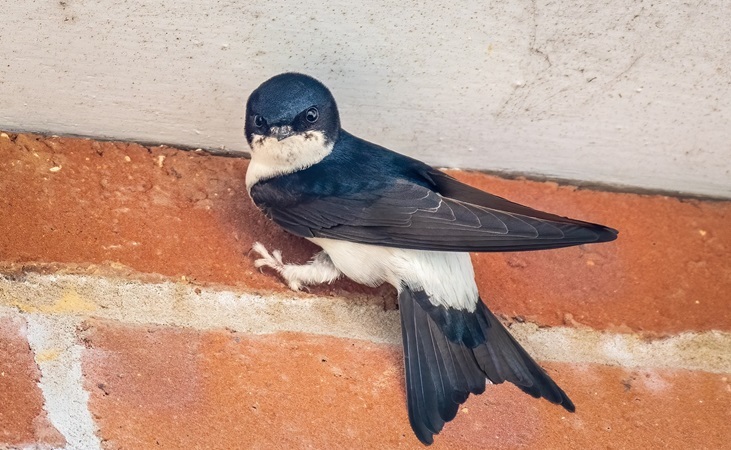
House Martins
House martins tend to construct their nests out of mud. However, mud of good quality can often be hard to find. Another issue is that smooth walls on buildings - which are more typical today than the rougher designs of old - don’t have as much purchase for their nests, which can then fall to the ground or be shaken loose by vibrations.
You can encourage house martin nesting by leaving a part of your garden to be bare mud to provide them with their raw material. Specially designed nests are also an option and are ideally placed under the eaves of a roof. House martins lay eggs from May to August, and they are loyal to their nesting sites.
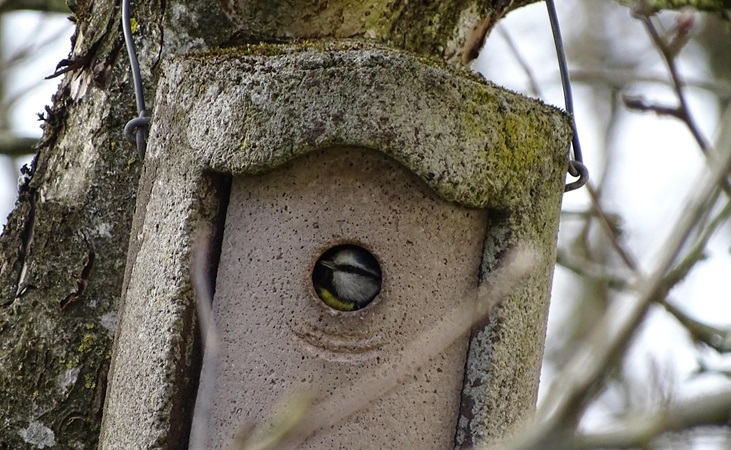
Can I Monitor My Nest Box?
Many nest boxes will have a hinged, removable roof to allow easy access for cleaning, maintenance or monitoring. It’s important not to disturb the nest box during the breeding season, as adult birds can get spooked and abandon the nest.
There are specially designed Wi-Fi cameras that can be used in combination with nest boxes. You can also safely observe from a distance or from behind a window.
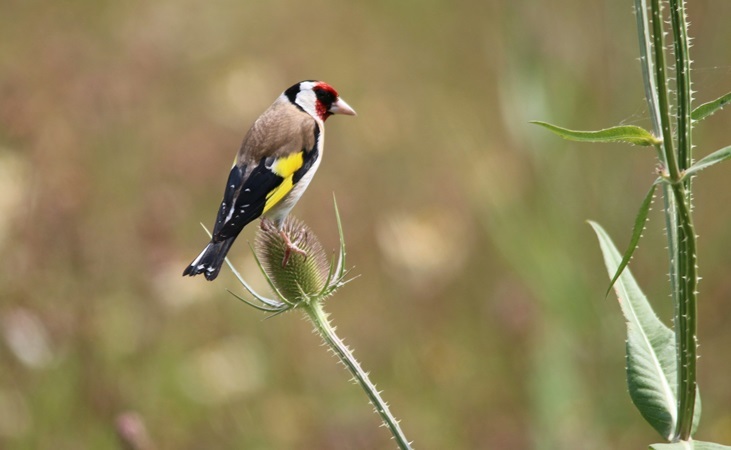
Will All Birds Use A Nest Box?
Not all bird species will find a nest box suitable. Chaffinches or goldfinches for example prefer to build their nest between trees and bushes. Providing bird nesting boxes is very valuable for bird conservation, but you can go even further by planting bare root hedging, especially varieties that produce nuts and berries.


